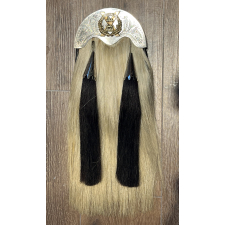World War Two Militaria
Collecting World War Two militaria memorabilia can be a fascinating and rewarding hobby. We have categorised various items of militaria related to WW2 and curated them into this relevant category for ease.
- Equine equipment£145.00
- German WW2 S.A. dress dagger£1,095.00
- SS Mans Dagger£2,450.00
- G7A Torpedo Giroscope£1,550.00
- Selection of War MedalsRegular Price £225.00 Special Price £190.00
World War Two Militaria
World War II (1939-1945) was a global conflict that involved most of the world's nations, including all the great powers, organised into two opposing military alliances: the Allies and the Axis. It was the deadliest and most widespread war in history, with an estimated 70-85 million casualties, including civilians and military personnel.
Here are some key points about World War II:
Causes:
Treaty of Versailles (1919): The harsh conditions imposed on Germany after World War I, particularly the Treaty of Versailles, contributed to economic hardships and political instability in the country.
Aggression of Totalitarian Powers: The expansionist policies of totalitarian regimes in Germany, Italy, and Japan played a significant role. Adolf Hitler's ambitions for territorial expansion, Benito Mussolini's fascist regime in Italy, and Japan's imperialistic aspirations in Asia were key factors.
Timeline:
Invasion of Poland (1939): Germany's invasion of Poland on September 1, 1939, marked the beginning of the war. This prompted Britain and France to declare war on Germany.
Blitzkrieg: Germany quickly conquered much of Europe using a military strategy known as Blitzkrieg, characterized by rapid and coordinated attacks.
Battle of Britain (1940): The German air force, the Luftwaffe, attempted to gain air superiority over Britain but was ultimately unsuccessful.
Operation Barbarossa (1941): Germany invaded the Soviet Union, breaking the Molotov-Ribbentrop Pact.
Pearl Harbor (1941): Japan's surprise attack on the U.S. naval base in Pearl Harbor brought the United States into the war.
Major Battles:
Stalingrad: A turning point on the Eastern Front, where the Soviet Union defeated the German Army.
D-Day (Normandy Invasion): Allied forces landed on the beaches of Normandy on June 6, 1944, leading to the liberation of Western Europe.
Battle of Midway: A crucial naval battle in the Pacific that weakened Japan's naval power.
Holocaust:
The systematic genocide committed by Nazi Germany, resulting in the mass murder of six million Jews, as well as millions of others, including Romani people, Poles, Soviet POWs, and people with disabilities.
End of the War:
The war in Europe ended with the unconditional surrender of Germany on May 7-8, 1945 (V-E Day).
The war in the Pacific ended after the U.S. dropped atomic bombs on Hiroshima and Nagasaki in August 1945. Japan surrendered on August 15, 1945 (V-J Day).
Consequences:
The establishment of the United Nations in 1945 to promote international cooperation and prevent future conflicts.
The beginning of the Cold War between the United States and the Soviet Union, as they emerged as superpowers with opposing ideologies.
Widespread devastation and loss of life, leading to significant changes in the geopolitical landscape.
World War II had a profound and lasting impact on the world, shaping the course of history for decades to come.





























































